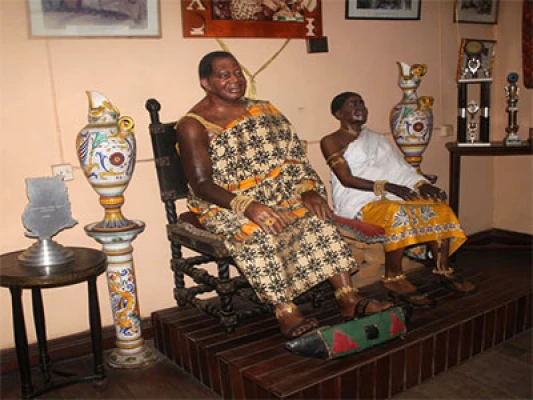Bisa Abrewa Museum: A Treasure...
June 28, 2024

The Prempeh II Jubilee Museum, located in the heart of Kumasi, Ghana, is a significant cultural and historical landmark that offers visitors a deep dive into the rich heritage of the Ashanti Kingdom.
Named in honor of Otumfuo Sir Osei Agyeman Prempeh II, the 14th King of the Ashanti Kingdom, the museum stands as a testament to the legacy and contributions of the Ashanti people.
The museum was established in 1995, commemorating the 50th anniversary of the coronation of Otumfuo Prempeh II. This initiative was part of broader efforts to preserve and celebrate Ashanti history and culture. Otumfuo Prempeh II, who ascended to the throne in 1931, was renowned for his efforts to modernize the Ashanti Kingdom while maintaining its traditions and customs. His reign saw significant developments in education, health, and infrastructure, as well as the preservation of Ashanti cultural heritage.
The Prempeh II Jubilee Museum is strategically located within the Manhyia Palace complex, which is the traditional seat of the Asantehene, the King of the Ashanti. The museum's location within this historic and culturally significant area enhances its importance as a repository of Ashanti heritage.
The museum's collection includes a wide range of artifacts that reflect the history, culture, and achievements of the Ashanti people. Visitors can view royal regalia, including gold ornaments, swords, and traditional Ashanti stools, which symbolize the authority and continuity of the Ashanti chieftaincy. Additionally, the museum houses historical photographs, documents, and personal items that belonged to Otumfuo Prempeh II, offering a glimpse into his life and reign.
One of the museum's highlights is the replica of the Golden Stool, also known as the Sika Dwa Kofi. The Golden Stool is the most sacred symbol of the Ashanti Kingdom, representing the unity and spirit of the Ashanti people. According to legend, the stool descended from the heavens and landed on the lap of the first Asantehene, Osei Tutu, in the late 17th century. The stool is believed to contain the soul of the Ashanti nation and is never allowed to touch the ground.
The museum also provides educational resources and programs aimed at promoting understanding and appreciation of Ashanti culture. This includes guided tours, workshops, and lectures that cater to both locals and international visitors. By doing so, the museum plays a crucial role in preserving Ashanti heritage and fostering cultural exchange.
Over the years, the Prempeh II Jubilee Museum has become a popular destination for tourists, researchers, and students. It serves as a bridge between the past and the present, allowing visitors to connect with the history and traditions of the Ashanti people. The museum's role in preserving and promoting Ashanti culture ensures that future generations can continue to learn from and be inspired by their rich heritage.
The Prempeh II Jubilee Museum is not just a repository of artifacts; it is a celebration of Ashanti history and culture. It honors the legacy of Otumfuo Prempeh II and serves as a beacon of pride for the Ashanti people. The museum's continued efforts to educate and inspire visitors contribute significantly to the preservation of Ghana's cultural heritage.
June 28, 2024
July 4, 2024
June 27, 2024
September 4, 2023
November 23, 2023